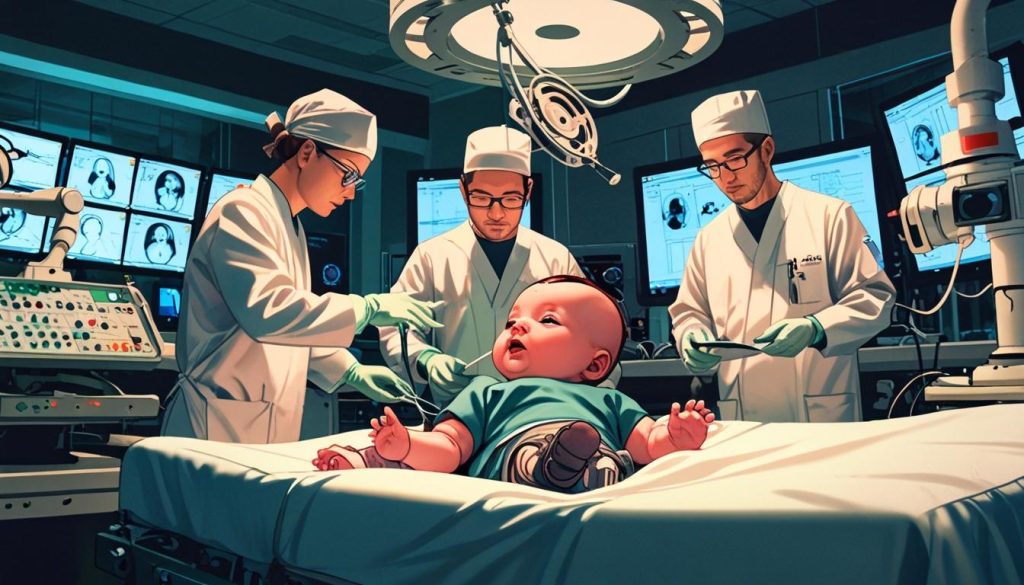In a remarkable medical breakthrough, a two-year-old boy born without auditory nerves has regained his hearing following an intricate operation at the Maggiore Hospital in Parma. This rare condition, known as bilateral auditory nerve absence, prompted the medical team to employ a pioneering approach—an Auditory Brainstem Implant (ABI). This innovative device directly stimulates the brainstem, overcoming the absence of the auditory nerve, and has shifted the landscape of treatment options for profoundly deaf children.
The operation’s complexity stems from the delicate placement of the ABI, which consists of a tiny plate housing 21 electrodes, precisely implanted at the site of the cochlear nucleus in the brain. Maurizio Falcioni, the head of Otoneurosurgery at the hospital, led the procedure, closely collaborating with electrophysiologist Maurizio Guida. The duo utilised advanced monitoring techniques to ensure safe placement, amidst the risks associated with operations near critical nerve centres.
Impressively, the activation of the implant was conducted while the child remained under general anaesthesia. Guida meticulously identified which electrodes elicited sound perception from the child’s brain, a notably challenging task given the lack of direct feedback from the young patient. As the implant was activated, medical personnel observed significant behavioural changes in the child, indicating not only a newfound ability to hear but also a possible enhancement in emotional wellbeing.
This pioneering surgery stands at the forefront of medical and engineering advancements, a point Falcioni reinforces, highlighting its execution in a specialised environment where such high expertise converges. The collaboration involved not only otoneurosurgeons and electrophysiologists but also skilled professionals from paediatric anaesthesia, intensive therapy, and neuroradiology departments. This multidisciplinary effort is critical; indeed, only a handful of medical centres globally possess the capability and technology to undertake such intricate procedures.
The implications of this surgery extend beyond mere auditory perception. As noted by the medical team, initial observations reveal the child began recognising sounds and exhibiting improvement in vocal quality just eight months post-operation, suggesting a potential boost in both communication abilities and cognitive development.
According to the National Deaf Children’s Society, the application of ABIs is still relatively nascent, primarily established for adult patients, especially those with neurofibromatosis type 2. However, the technological leap evident in the recent procedure highlights a growing acceptance of ABIs for younger patients with profound deafness who lack functioning cochlea or auditory nerves.
Historically, Auditory Brainstem Implants have primarily been deployed for patients facing anatomical barriers to cochlear implants, with a growing catalogue of successful cases championing their efficacy among children. A 2015 study reviewed the humane application of ABIs in paediatric cases and identified over 200 interventions performed across Europe and the U.S., yielding positive auditory outcomes.
The successful implantation in this young patient not only underscores the evolution of surgical intervention for congenital deafness but also raises awareness of the potential healthcare advancements in the domain of auditory restoration. Both Falcioni and Guida stress the criticality of tailored techniques and gained experience, emphasising that the burgeoning field of ABIs continues to promise new horizons for children born with hearing impairments.
📌 Reference Map:
- Paragraph 1 – [1], [2]
- Paragraph 2 – [1], [4]
- Paragraph 3 – [1], [3], [6]
- Paragraph 4 – [1], [7]
- Paragraph 5 – [2], [5]
- Paragraph 6 – [3], [5]
Source: Noah Wire Services





